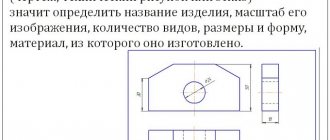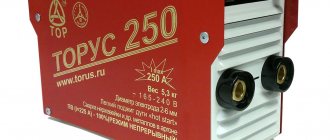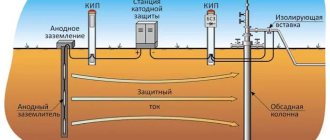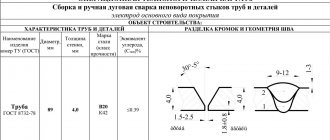The production process cannot be imagined without regulation of technical actions and stages. For this purpose, a special document is being developed - a technological diagram. A diagram is a graphic or textual interpretation of the required set of operations, the observance of which leads to the production of a finished product. When compiling it, the number of production lines, the set of equipment used, and the stages of manual and mechanized labor are taken into account. Taking into account all factors and strict regulation of production processes allows us to achieve high efficiency and quality of production.
Types of technological schemes
Considering the huge variety of manufacturing enterprises, manufactured products, and the features of various technologies, there are different types of technological schemes. The general classification looks something like this:
- Industrial technological scheme. The most common type, which is widely used in the production of dimensional goods, high volumes or large-sized products. They are designed for long-term use in the production of the same type of product for a long time. It can be designed in such a way that it can be used in the production of a variety of similar products. Such types are called combined. Their development takes into account the possibility of quickly reconfiguring equipment for the production of another product, practically without stopping the technological process. The development of such schemes is justified by economic factors; the continuous operation of the production line and workers allows one to avoid unnecessary waste and increase efficiency. Most often, combined ones are used in pharmaceutical enterprises, where medications, nutritional supplements, vitamins and other products are produced on the same equipment. The main advantage is that the level of initial capital investment and production costs during the operation of the equipment can be significantly reduced.
- Pilot-industrial. This type is a harbinger of industrial schemes. They are developed in cases where it is necessary to establish the production of a fundamentally new type of product. It can be a little simplified and supplemented during the operation of the production line. On its basis, technologists collect information to draw up basic industrial process flow diagrams.
- Bench installations. They are also called modular; they are small mounting trusses on which various types of equipment are mounted. This design greatly simplifies production experiments, since the installation can be easily and quickly converted. They are used in small industries, with small volumes and dimensions of manufactured products.
- Laboratory installations. They are analogous to bench ones and allow you to develop a scheme for the production of completely new products in laboratory conditions, under the supervision of engineers and developers. They are used in cases where the process of transition from laboratory testing to direct production without loss of efficiency and quality. Laboratory conditions allow you to conduct a wide range of experiments, study all the advantages and disadvantages of technological schemes, and also accurately determine ways of improvement.
There is a classification of technological schemes based on the type of production organization:
- Periodic action schemes. Industrial production based on them involves periodic pauses and stops of the production process. Most often, they are combined, when line re-adjustment is required, or are associated with the production of small volumes of goods, when there is no need to maintain a continuous process. The production process is usually carried out in one or two shifts.
- Continuous circuits. The technological process regulated by them provides for a certain sequence of operations that allow the production of goods without the need for interruption. Almost every plant that produces products in large volumes operates continuously. Some industrial equipment cannot be operated intermittently. For example, if the production involves liquid substances that solidify during breaks, after which the equipment needs to be cleaned. In such cases, it is very important that the technological scheme takes into account force majeure situations and regulates ways to solve them without stopping the equipment.
- Combined type schemes. Mixed schemes provide for a technological process that combines continuous and interrupted stages. Such models are quite common, as they are more versatile. Based on them, it is possible to produce products of various types, as well as in production facilities that depend on the level of orders and seasonality. When continuous production is necessary at a certain time, and volume limitation at other times.
The choice of technological scheme is the most important stage of preparation for the launch of production or the release of a new product. The efficiency of the future production process directly depends on the quality of preparation and calculations when developing the scheme.
Depending on the volume of accounting information, schemes are divided into two types:
- full;
- principled.
The complete one includes a graphical representation of the production process, a description of processes, equipment and instruments, automatic processes, safety and security devices, energy supply, supply and storage of raw materials, as well as finished products. It is ideal for learning the complete process and setting up a production process. But it is not suitable for initial familiarization, as it contains a huge amount of information that is impossible to quickly study.
The basic version is much easier to work with, it is great for initial familiarization and contains the following information:
- The sequence of production operations clearly regulates the sequence of actions performed (an example could be painting, drying, heating, cooling, chemical processes and others).
- Necessary equipment for production (devices, conveyors, heating vats, refrigeration equipment, mixers, compressors, pumps, filtration equipment, lifts and others).
- Standards for the technological regime of production areas (electrical voltage, pressure, temperature, etc.).
- Methods for using raw materials, workpieces and other additional components, obtaining finished products, recycling waste and by-products.
The schematic diagram should be provided to a safety engineer so that he can develop an evacuation plan, placement of exits and personal protective equipment.
The schematic diagram of the technological process should be based on the following principles:
- several similar production lines can be described using one example;
- also, operations of the same type do not need to be described separately;
- no need to add redundant equipment;
- waste disposal and recycling processes can be described briefly;
- no need to add a description of the test equipment;
- facility protection devices are not described, as they are developed on the basis of a technological diagram.
The general technological scheme of production allows you to have ideas about the future enterprise, the fire and labor safety system, identify shortcomings and ways of optimization.
What are the fines for lack of technical cards?
In Russia, the availability of technological maps in catering establishments is checked by Rospotrebnadzor. If the TCs are absent at the time of the inspection, the establishment may be fined on the basis of Article 14.43 of the Code of Administrative Offenses of the Russian Federation. The fine amounts are:
- from 10,000 to 20,000 rub. for an official;
- from 20,000 to 30,000 rub. for individual entrepreneurs;
- from 100,000 to 300,000 rubles for legal entities. faces.
The fine will increase if Rospotrebnadzor received a complaint from a consumer about the quality of food, which was harmful to his health. For example, for legal persons, the fine will be in the region of 600,000 rubles.
In order to protect yourself from fines, and your guests from the unpleasant consequences of poor-quality food, create technological maps and clearly define the cooking technology for your staff.
The main problems with incorrect preparation of technical maps for dishes
If the technological map of dishes for a cafe is drawn up incorrectly, then, at a minimum, the cooking method may be disrupted or the taste of the dish will be spoiled. What other problems could there be if the technical specifications were drawn up incorrectly:
- The shelf life was indicated incorrectly - if the dish is stored longer than it can be stored, the taste will be spoiled. This entails writing off the damage, and this already affects the overall profit of the cafe.
- The yield of the dish is indicated incorrectly - in the menu there is one yield, but in the shopping center the cook has another. Some guests may not notice this, but others will notice and the cafe’s reputation will be damaged.
- The cost price of the ingredient is not indicated - if the ingredient does not have a cost price, then the revenue and profit upon sale will be calculated incorrectly.
- There is no detailed cooking method - not all chefs may know the cooking technology. If one of the stages is violated, the dish may be spoiled.
- The presentation does not correspond to the picture in the menu - the photo that you attach to the technological map should be the same as the one in your menu. Otherwise, the guest who receives the dish may be dissatisfied with the serving and refuse it.
Purpose
The hydrogen production unit is designed to provide technical hydrogen to newly commissioned installations:
- isomerization,
- hydrotreating,
- hydrocracking,
- catalytic reforming.
The construction of a hydrogen production plant will allow:
- eliminate the missing demand for hydrogen at refineries
- produce high-purity hydrogen (at least 99.5% vol.), which reduces the volume of gas in subsequent hydrogen consumption schemes;
- improve environmental conditions on the territory of the enterprise through the use of desulfurized gas from the PSA unit as fuel.
Hydrogen production plant
Technical maps of dishes and accounting system
Nowadays you can enter technological maps in any accounting system; it’s convenient and fast - it helps save time for the owner and technologist. To explain with a “live” example, we will show how to create tech. card into your establishment's accounting system. For example, let's look at how to create a technological map of a dish in the Poster cafe automation program for Greek salad:
1. To create tech. map, open the Menu tab → Tech. cards in the admin panel.
2. Click the Add button.
3. Enter a name, select a category and indicate the workshop where the dish will be prepared.
4. Upload a photo of the dish or select the color of the icon - they will be displayed on the terminal of the waiter or cashier.
5. Describe the preparation process and indicate the time required to prepare a portion of salad.
6. Select the ingredients and semi-finished products that make up the dish. Please indicate gross and net weight.
Next, you need to indicate the markup and cost of the salad, and the cost of the dish will be calculated after you create the supplies.
Ready tech. The cards can be printed out for the cook and hung over his work area. This way, he will always see an example of the presentation, will be able to read the cooking method and will not forget how many grams of which ingredient should be put in the dish.
Calculation of food costs
In a correctly compiled technical card, it’s easy to calculate the total cost, set a markup and check the cost. Using the example of the same Greek salad, we can conclude that if you do not add some ingredient to the dish, the cost will be incorrect. Because of this, revenue and profit will be less, since money was spent on food when purchasing ingredients.
Material balance
| Product name | Measurement | Day | |
| unit | total | % | |
| Inputs | |||
| Feed gas | T | 276,00 | 22,30 |
| HP steam consumption in pre-reforming | T | 633,60 | 51,20 |
| HP steam consumption in reforming | T | 327,90 | 26,50 |
| Amount of raw materials | T | 1 237,50 | 100,00 |
| Exits | |||
| Hydrogen from the plant | T | 89,70 | |
| Stripping gas flow from the PSA unit to the furnace | T | 605,10 | |
| Process condensate consumption | T | 542,70 | |
| Sum of products | T | 1 237,50 | |











